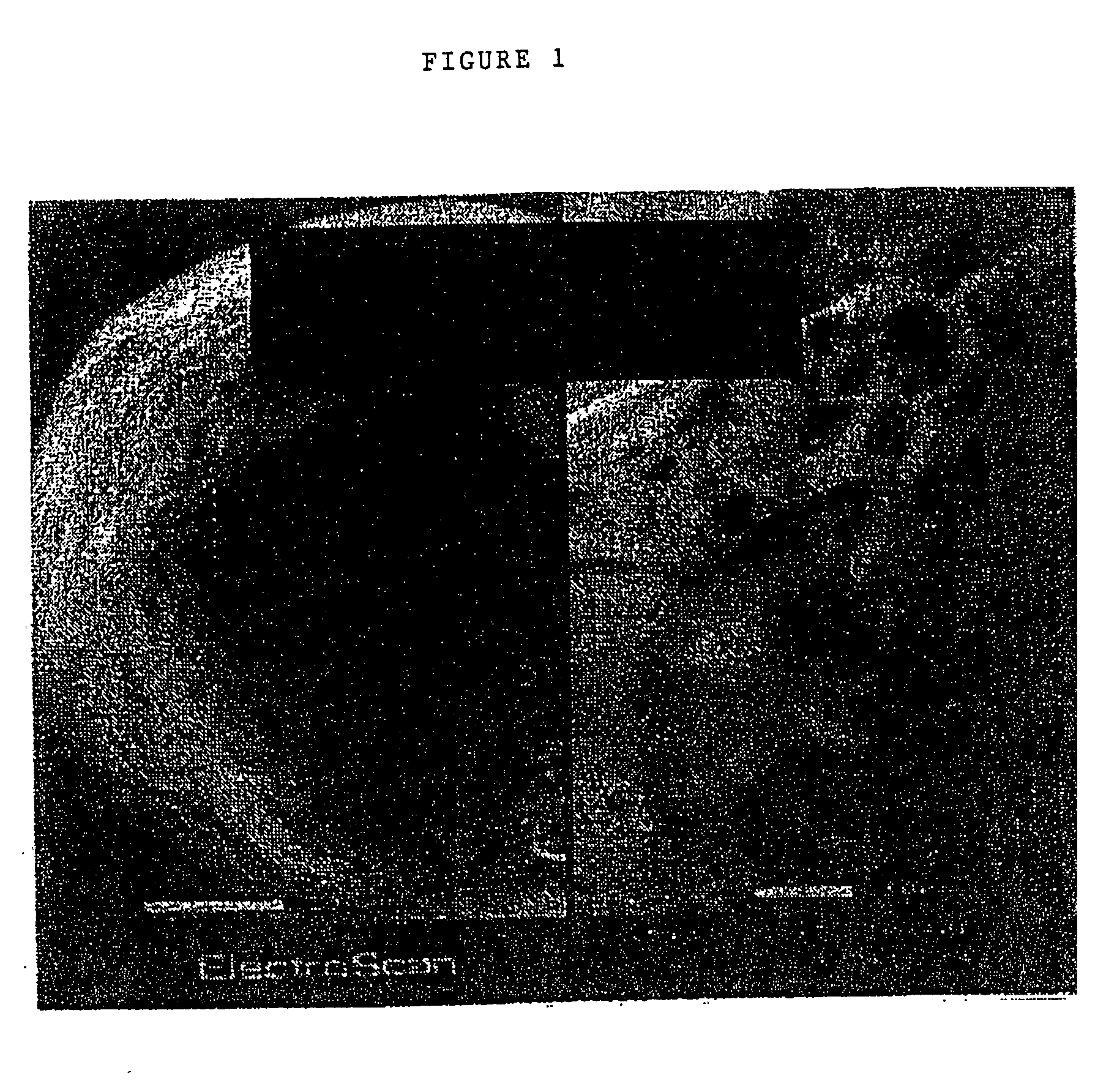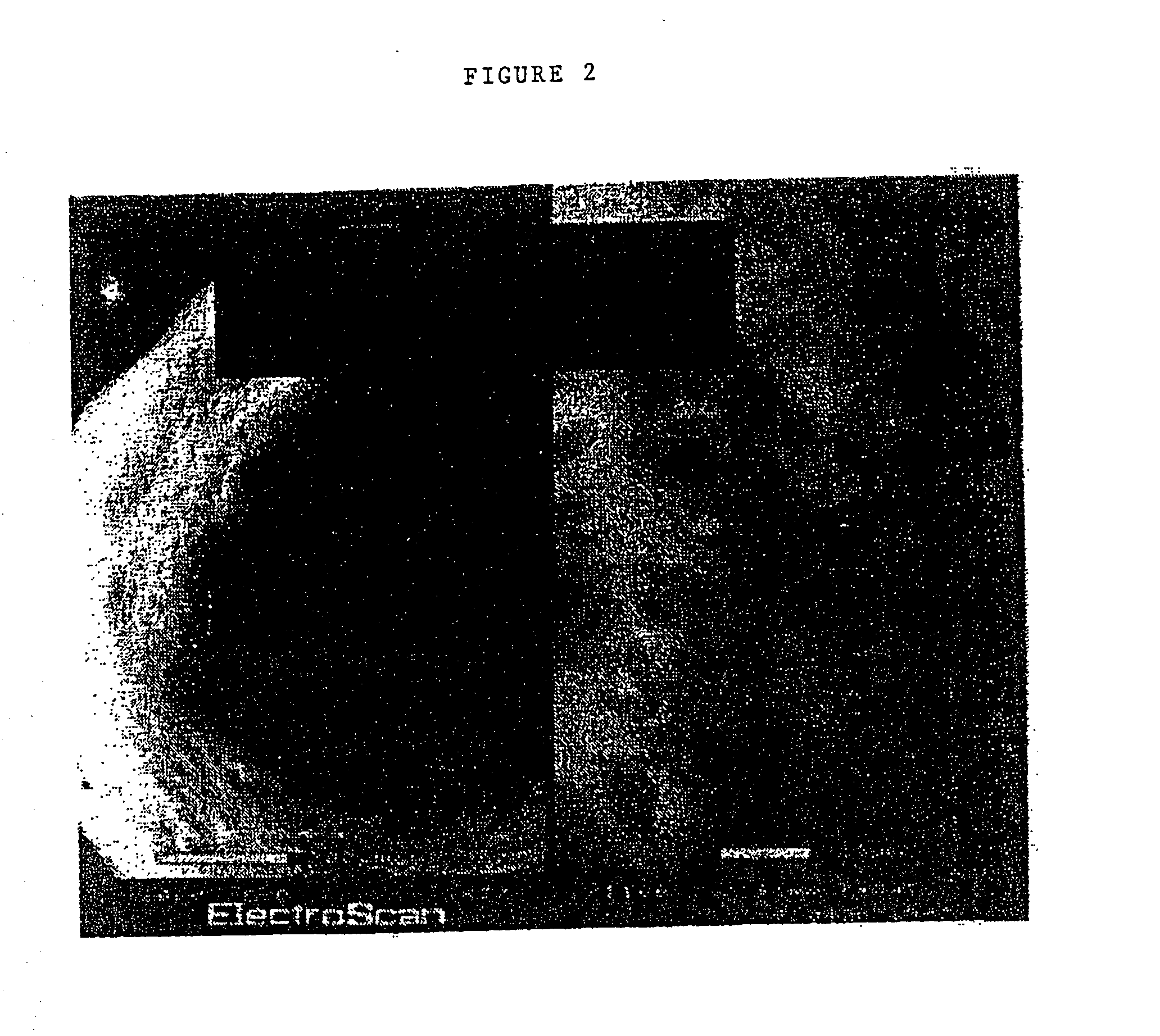Controlled release formulations coated with aqueous dispersions of acrylic polymers
- Summary
- Abstract
- Description
- Claims
- Application Information
AI Technical Summary
Benefits of technology
Problems solved by technology
Method used
Image
Examples
example 2
Retardant Coating--No Curing Step
[0130] In Example 2, hydromorphone beads prepared in accordance with Example 1 were overcoated with Eudragit.RTM. RS 30D to a 5% weight gain as set forth in Table 2 below. No terminal drying was conducted.
2 TABLE 2 Ingredients Percent (by wt) Amt / Unit (mg) Hydromorphone beads 92.59 80 Eudragit .RTM. RS30D 4.63 4 Citroflex 2 0.93 0.8 (triethyl citrate) Talc 1.85 1.6 Purified water qs 100 86.4
[0131] The hydromorphone beads were tested for initial dissolution, and then stored for one month under accelerated conditions of 37.degree. C. / 80%RH (RH=relative humidity). After one month, the beads were found to have agglomerated.
[0132] Dissolution tests were carried out via the USP Basket Method, 37.degree. C., 100 RPM, first hour 700 ml gastric fluid at pH 1.2, then changed to 900 ml at 7.5. The dissolution was conducted by placing an open capsule containing an appropriate weight of beads into a vessel. The results are set forth in Table 3 below:
3TABLE 3 Hydr...
example 3
Protecting the Retardant Coating
[0134] In order to determine if the slowing of the dissolution of the hydromorphone beads of Example 2 was due to a stability problem between the hydromorphone and the retardant, in Example 3 Nu pariel hydromorphone beads were prepared according to Example 1, then overcoated with 5% HPMC, and tested without the retardant layer. Dissolution tests were conducted initially, and after storage at accelerated conditions of 37.degree. C. dry and 37.degree. C. / 80%RH.
[0135] The results of the dissolution tests for Example 3 are set forth in Table 4 below:
4TABLE 4 Hydromorphone HCl 8 mg Controlled Release Capsules Stability Data Summary Average Hydromorphone Weight Testing Time HCl (mg) 1 hr 2 hr Initial 8.49 166 100.0 100.0 37.degree. C. dry 1 month 8.49 167 100.0 100.0 2 months 8.49 167 100.0 100.0 37.degree. C. / 80% RH 1 month 8.49 167 100.0 100.0 2 months 8.49 170.3 100.0 100.0
[0136] The results of Example 3 show that the coated beads which did not include a...
example 4
Prior Art Curing (According to Literature Recommendations)
[0138] In Example 4, hydromorphone beads prepared according to Example 3 were coated with the Eudragit.RTM. RS to a 5% weight gain. After application of the coating, the beads were dried (cured) at 45.degree. C. in a fluidized bed dryer for 2 hours. This temperature is above the Tg of Eudragit.RTM. RS 30D, plasticized with Triethylcitrate at 20% level of solids. Dissolution tests were conducted initially, and after storage at 37.degree. C. dry and 37.degree. C. / 80%RH. The results are set forth in Table 5 below:
5TABLE 5 Hydromorphone HCl 8 mg Controlled Release Capsules Stability Data Summary Average Testing Hydromorphone Weight Time HCl (mg) 1 hr 2 hr 4 hr 8 hr 12 hr 18 hr 2 hours* 8.50 178.5 8.0 21.8 45.7 79.3 94.2 37.degree. C. dry 1 mo. 8.50 177 16.8 25.8 44.2 67.8 80.8 2 mo. 8.39 174 24.6 40.8 61.8 83.4 94.0 100.0 37.degree. C. / 80% RH 1 mo. 8.50 174 48.8 60.1 80.7 94.0 100.0 2 mo. 8.55 178 53.6 76.3 90.7 98.2 100.0 *initi...
PUM
| Property | Measurement | Unit |
|---|---|---|
| Fraction | aaaaa | aaaaa |
| Fraction | aaaaa | aaaaa |
| Fraction | aaaaa | aaaaa |
Abstract
Description
Claims
Application Information
 Login to View More
Login to View More - R&D
- Intellectual Property
- Life Sciences
- Materials
- Tech Scout
- Unparalleled Data Quality
- Higher Quality Content
- 60% Fewer Hallucinations
Browse by: Latest US Patents, China's latest patents, Technical Efficacy Thesaurus, Application Domain, Technology Topic, Popular Technical Reports.
© 2025 PatSnap. All rights reserved.Legal|Privacy policy|Modern Slavery Act Transparency Statement|Sitemap|About US| Contact US: help@patsnap.com



